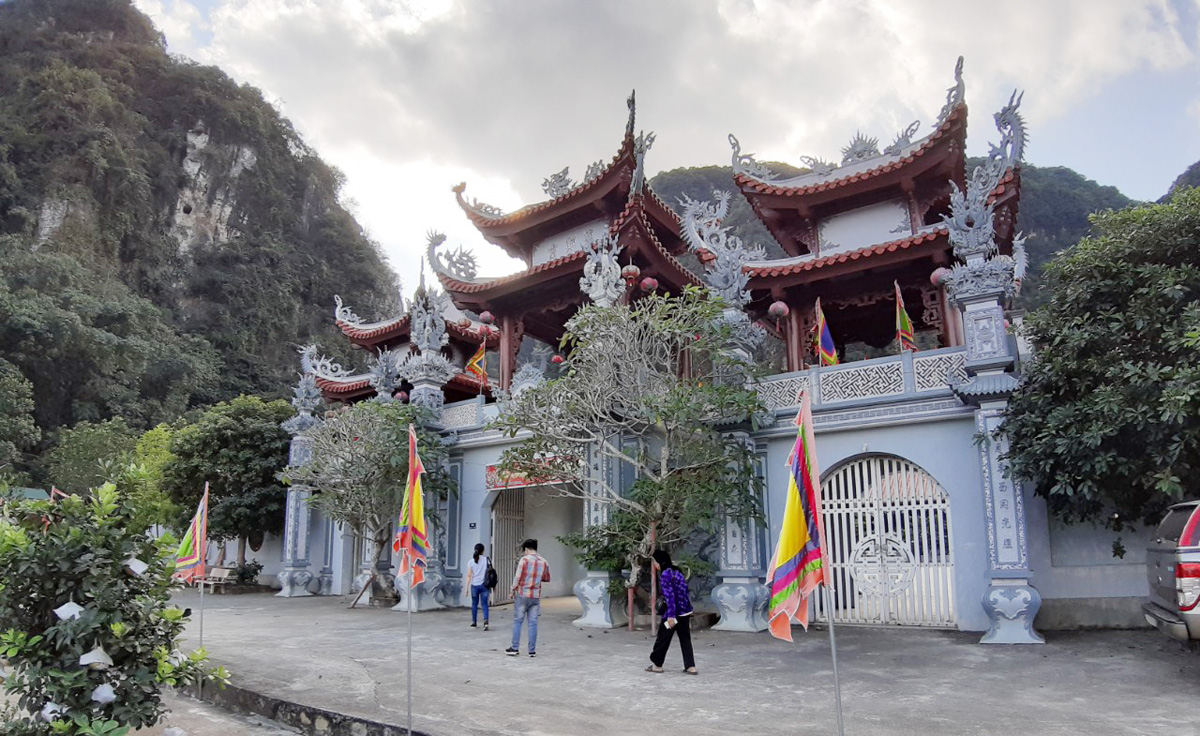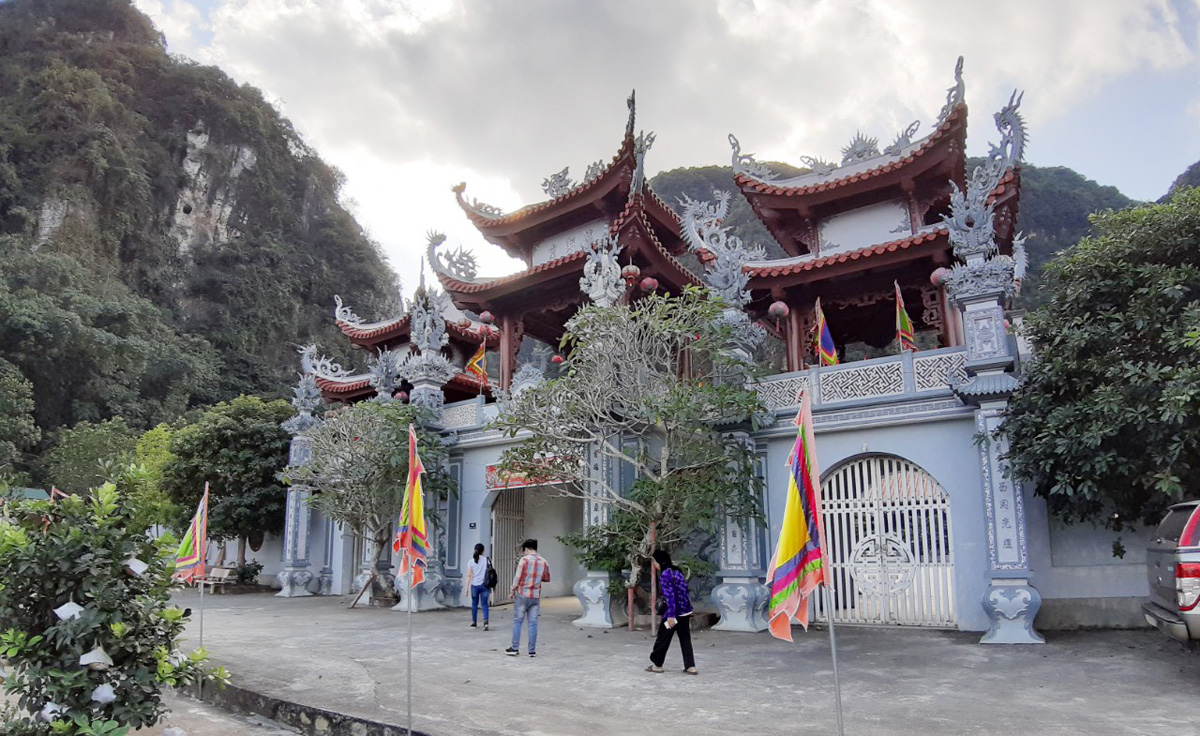
(HBO) – Hoa Binh province’s Cao Phong district, home to Muong Thang land with excellent cultural values and stunning natural landscapes, has paid due attention to preserving its culture to develop various kinds of tourism products.
 A big investment has been poured into Bong Lai Temple in Cao Phong district’s Cao Phong town to attract tourists.
A big investment has been poured into Bong Lai Temple in Cao Phong district’s Cao Phong town to attract tourists.
Traditional culture and festivals in Muong Thang land have been well maintained in the past time.
In recent years, Cao Phong district has organised training courses for local people, helping them to develop community-based tourism coupled with preserving traditional cultural values. Accordingly, community-based tourism has been promoted in Tien village in Thung Nai commune; Mung village in Hop Phong commune; and Khanh Rom village in Thach Yen commune.
Cao Phong district has enhanced both tourism management and COVID-19 prevention measures. However, local tourism has been hit by the pandemic, with revenue topping 4.5 billion VND (195,000 USD) in Quarter 1, or 2.8 billion VND lower than the figure recorded in the same time last year.
With a view to luring more tourists, the district directed tourism businesses to stabilise prices and not to increase room rates.
It has stepped up communication work, attended a tourism promotion event in Hanoi from January 22-24, as well as carried out favourable policies to attract investment in the tourism sector.
Local people have been encouraged to preserve traditional culture, and able to access legal capital to invest in community-based tourism.
Additionally, the district has focused on developing entertainment and sport works, and restoration of traditional festivals to serve tourism development./.
With an increasingly vibrant and widespread emulation movement aimed at building cultured residential areas and cultured families, Yen Thuy District has been making steady progress toward improving both the material and spiritual well-being of its people, while fostering a civilized, prosperous, beautiful, and progressive community.
Once lacking recreational spaces and community facilities, Residential Group 2 in Quynh Lam Ward (Hoa Binh City) has recently received attention for the construction of a new, spacious, and fully equipped cultural house. The project followed the model of state support combined with public contributions in both labor and funding.
The "All people unite to build cultural life" movement, which has been effectively integrated with Kim Boi district’s socio-economic development goals, is fostering a lively spirit of emulation across local residential areas, hamlets, villages, public agencies, and enterprises. In addition, through the initiative, traditional cultural values are being preserved and promoted, while community solidarity and mutual support in poverty reduction and economic development are being strengthened.
A working delegation of the Hoa Binh provincial People’s Committee led by its Permanent Vice Chairman Nguyen Van Toan on June 11 inspected the progress of a project to build the Mo Muong Cultural Heritage Conservation Space linked to tourism services in Hop Phong commune, Cao Phong district.
Born and growing in the heroic land of Muong Dong, Dinh Thi Kieu Dung, a resident in Bo town of Kim Boi district, in her childhood was nurtured by the sweet lullabies of her grandmother and mother. These melodies deeply imprinted on her soul, becoming an inseparable part of her love for her ethnic group's culture. For over 20 years, this love for her hometown has driven Dung to research, collect, and pass down the cultural values of the Muong people to future generations.
In the final days of May, the Ethnic Art Troupe of Hoa Binh Province organized performances to serve the people in remote, mountainous, and particularly disadvantaged areas within the province. These were not just ordinary artistic shows, but they were the meaningful journeys aimed at spreading cultural values, enhancing the spiritual life of the people and contributing to the preservation of ethnic minority cultural identities.



 A big investment has been poured into Bong Lai Temple in Cao Phong district’s Cao Phong town to attract tourists.
A big investment has been poured into Bong Lai Temple in Cao Phong district’s Cao Phong town to attract tourists.